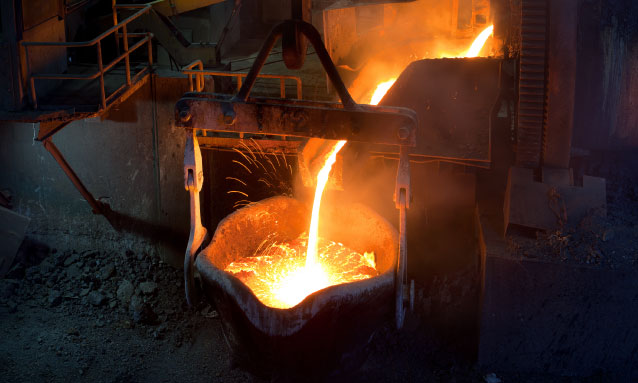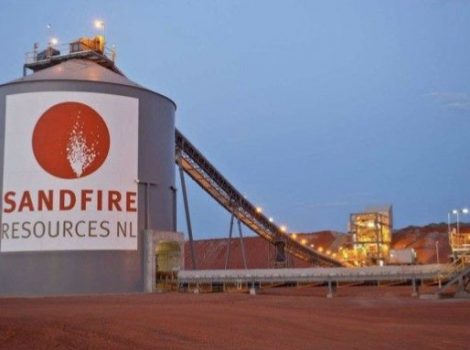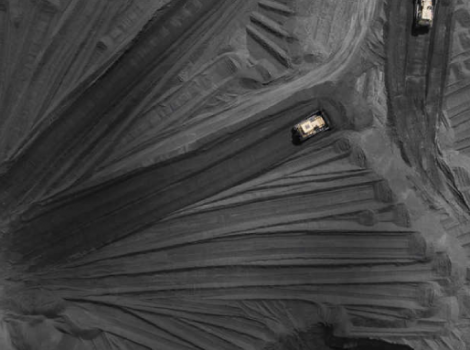
The sustained surge in the price of copper has turned the focus to Botswana as explorers become bullish about the Kalahari Copper Belt, believed to be hiding precious metals.
The rising copper price reached an eight-year high of $8,000 a tonne in December 2020 and has continued to climb since. Copper surged to its highest price since September 2011 at the beginning of March in its 11th straight monthly gain, reaching $9,614.30 per metric tonne. Of the key copper explorers in Botswana, Sandfire Resources says the purchase of the T3 Motheo copper mine in Botswana will diversify its copper portfolio and arrives at a time of positive market conditions.
“The T3 development is expected to form the cornerstone of the new, long-term Motheo copper hub for Sandfire in the Kalahari Copper Belt,” said Sandfire MD and CEO Karl Simich.
In December 2020, Sandfire Resources announced it would proceed with the $259-million development of the T3 Motheo copper/silver project following the completion of a positive definitive feasibility study (DFS) on a base case 3.2-million-tonne-a-year operation, with “clear visibility” to expand rapidly to a 5.2-million-tonne-a-year operation. Simich added that the decision to proceed with the investment in a new, long-life copper production hub in Botswana marked a pivotal moment in the company’s transformation into a global, diversified and sustainable mining company. Sandfire’ s operation will generate an estimated life-of-mine revenue of $2.45-billion and earnings before interest, taxes, depreciation and amortisation of $987 million. The project has an estimated past-tax net present value of $206 million, an internal rate of return of 21% and a payback period of 3.8 years from the start of production, according to company details.
Another major player, Khoemacau Copper Project, is backed by US private equity firm, Cupric Canyon. It is developing a 60,000 tons a year copper project in an area that runs northeast to the south-west in a band across northern Botswana, known as the ‘Kalahari Copper Belt’. About $550 million was raised in 2019 for the development of the Khoemacau Project. Mining production is expected in mid-2021. The defunct copper-nickel BCL mines might also get a new lease of life after the liquidator identified a potential buyer in January. The preferred bidder, Premium Nickel Resources Corporation, will shoulder some costs associated with the care and maintenance of the mines for the next six months as it assesses the viability of reopening the closed mines.
Should the liquidator and the Canadian firm reach a final agreement, Premium Nickel Resources Corporation is looking at injecting a substantial capital investment in the mines, which is envisaged to exceed $400 million in preparations to open the mines. The 14,875 square kilometres Kalahari Copper Belt has become a hotbed for explorers hoping to strike it rich in the area that extends over 800km of strike and contains multiple recent copper-silver discoveries. The deposits in the belt are generally blanketed by Kalahari sands, ranging from 2-60m in thicknesses which have kept them hidden from discovery until recent times.
Galileo Resources Plc, a mining explorer listed on LSE’s Alternative Investment Market (AIM), in May announced that it has completed the acquisition of Crocus-Serv, a Botswana based company, with assets that include 21 exploration prospecting licences of which 19 are in the highly prospective Kalahari Copper Belt.
Copper has the best medium- to long-term price prospects of all the metals with application in the decarbonisation of the world economy as it plays a much greater role in the manufacture of renewable applications than in conventional fossil fuel power. According to a report by Jefferies analysts, copper demand will “significantly” exceed supply this year with deficits set to blossom over the next seven to eight years. The multi-year deficits will drive the price of copper inexorably upwards.
“We forecast copper demand in renewable energy to increase from 997,000 tons in 2020 to 1.9 million tons (Mt) in 2030 in our base case and to 6.4Mt in our bull case,” the bank said.
Copper demand in renewable energy would fall to 343,000 tons in 2030 as per the bank’s base case scenario.
“The bull market for copper is now fully underway with prices up 50% from the 2020 lows, reaching their highest level since 2017,” said Goldman Sachs in a 2020 report.
“This current price strength is not an irrational aberration, rather we view it as the first leg of a structural bull market in copper,” it said.
Source: http://www.sundaystandard.info/copper-prices-a-boon-for-botswana-economy/



